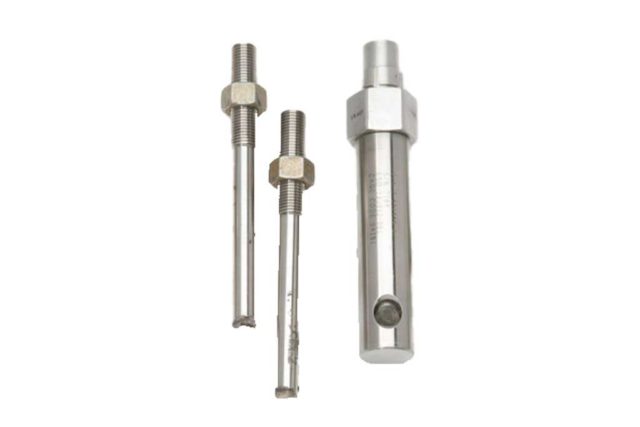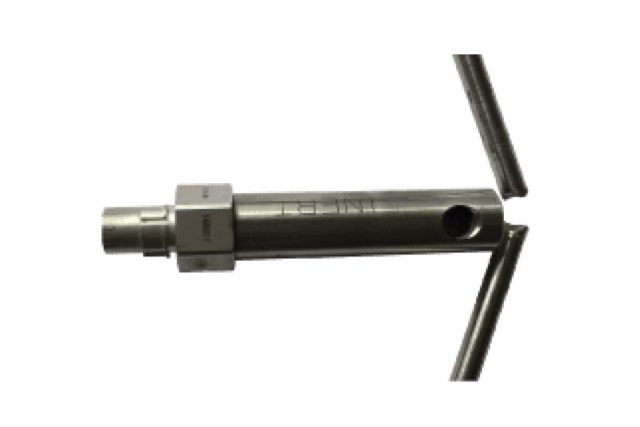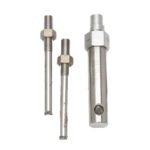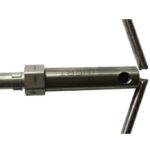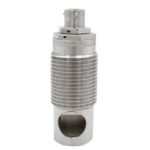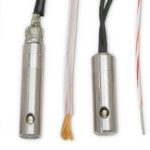Pyrotechnic Bolt Cutter & Rod Cutter
Product Description
The Pyrotechnic Bolt Cutter (or Rod Cutter) is a pyrotechnic device engineered to include a blade, which, when initiated, will precision cut the bolt or rod which is set against an anvil. The entire device consists of an initiator (which could be our NSI initiator for space applications), a chisel shaped cutter blade, a blade positioning shear pin and an anvil in a cylindrical housing. The bolt or rod to be cut fits through a clearance hole in the housing, placing it against the anvil. When the initiator functions, the blade is accelerated and impacts the bolt, forcing it to cut through against the anvil. This cutting process completely fractures the high strength steel bolt or rod.
Key Features
How A Pyrotechnic Bolt Cutter (or Rod Cutter) Works
Pyrotechnic bolt and rod cutters sever high-strength bolts and metal rods. In this approach, the front end of a piston is made into a shape of a cutter blade and gains impulse by the drive from the gas combustion to cut both metallic and nonmetallic materials. When used as a separating device, the cutter mainly functions by cutting the connecting bolts, providing an alternative to unlocking bolts.
Pyrotechnic cutters are advantageous for the following reasons:
- Allow the separation structures to be connected by ordinary bolts, not requiring weakening treatment
- Bearing capacity is high
- Achieve unlocking by cutting the bolt from the middle
- Performance is not affected by the installation conditions, such as the bolt pre-load force
- After the cutting work is completed, the gas is completely sealed in the chamber, and no undesired products are generated
The key factors for the cutter are the design of the cutter blade and the control of the cutting capacity to ensure that the bolts can be completely cut.
Specifications
- Operating Temperature
-54°C to +71°C (-65.2°F to 159.8°F) - Function Time
With the application of the All-Fire current, the cutter will completely sever the target in < 20 milliseconds - Reliability
99% at 95% confidence level - Altitude
Surface level to Deep Space - Estimated Weight
27 to 173 grams - Target Materials
High strength steel bolts and rods up to ½ inch diameter - Applicable Specifications
MIL-DTL-23659
MIL- STD-1512
MIL-STD-1576
MIL-HDBK-83578 - Electrical
Bridgewire Resistance 0.9 to 1.30 ohms
Insulation Resistance 100 megohms 500 VDC
No Fire 1 amp/ 1 Watt for 5 Minutes
Recommended All Fire 4.0 Amps for 50 millisecond duration
ESD 25KV Electrostatic discharge: 25 kV DC from 500 pF Cap thru a 5k ohm resistor – shorted pins to case and pin-to-pin
Electrical connections can be lead wire, bayonet or threaded connectors
Specification Questions
Questions to Consider
- Application – what are you trying to accomplish?
- What are your target materials?
- What are your space constraints?
- Is containment required?
- Redundancy requirements?
- Input power requirements – electrical, ETL, mechanical?
- Environmental requirements?
- Qualification requirements?
- Military or other requirements?
